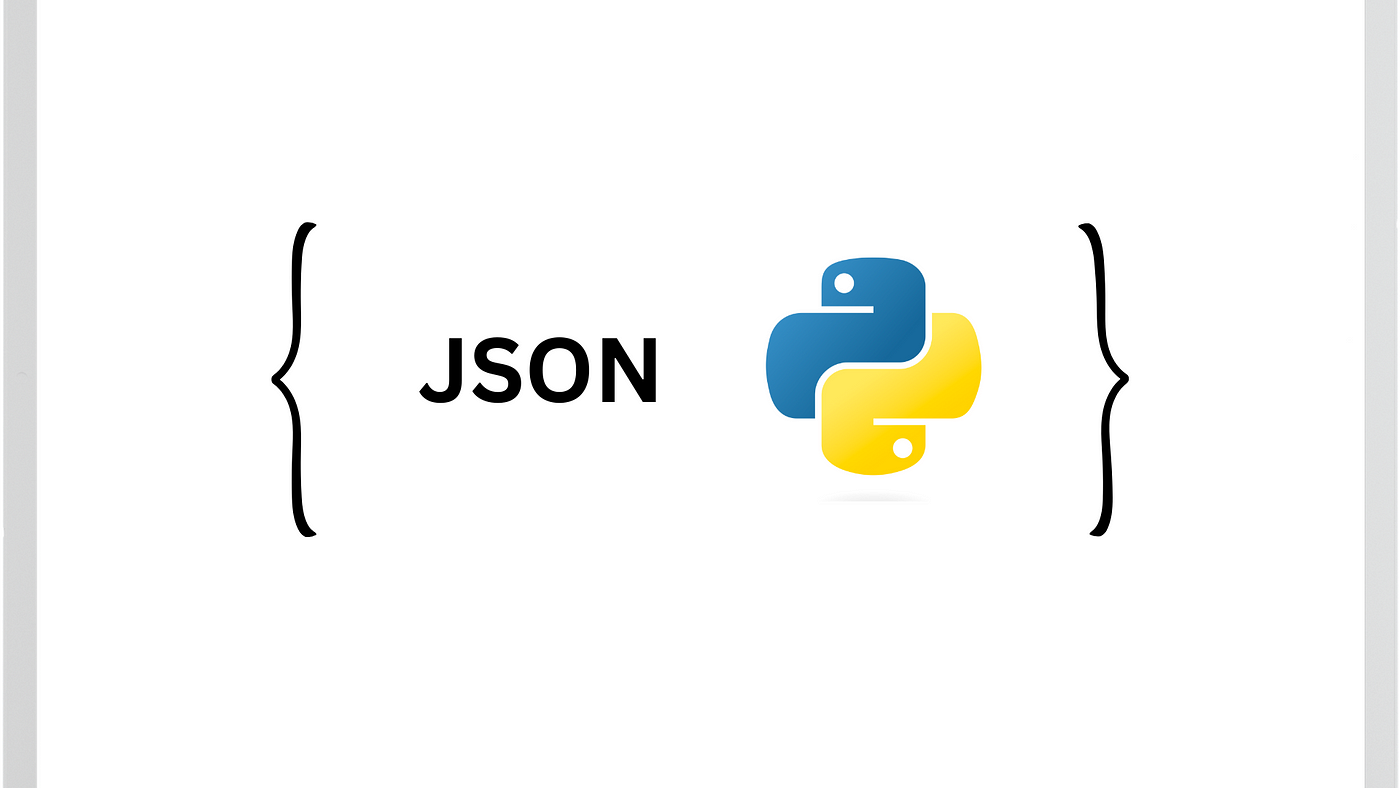Python JSON
JSON (JavaScript Object Notation) is a language-independent data format used to store or represent structured data. It is common to send and receive data in JSON format between a server and a web application. Python has a built-in package called JSON that supports JSON. To use this functionality, we must first import the JSON package into our Python program.
JSON exists in Python as a string. For example:
p = ‘{“name”: “Bob”, “languages”: [“Python”, “Java”]}’
# Import the JSON module:
import json
Write JSON to a File
After importing the JSON Python module, you can write JSON onto a file. The package provides a method called json.dump() that allows writing JSON to a file.
The json.dump() method accepts two arguments:
- Dictionary: Name of the dictionary
- File pointer: File pointer in open or append mode
We’ll create a file named example.json and convert a dictionary into a JSON object using the json.dumps() method.
import json
# Initializing dictionary
dic_exm ={
“name” : “Usman”,
“roll_no” : 1,
“cgpa” : 3.5,
“phone_num” : “03001234567”
}
with open(“example.json”, “w”) as outfile:
json.dump(dic_exm, outfile)
Output:
# File name example.json
{“Name” : “Usman”, “roll_no” : 1, “cgpa” : 3.5, “phone_num” : “03001234567”}
Convert From JSON to Python (Parse JSON)
json.load() method can be used to parse a valid JSON string and convert it into a Python dictionary.
Example 1:
import json
# JSON string
employee = ‘{“id” : ”10”, “name” : “Usama”, “department” : “IT”}’
print(“This is JSON”, type(employee))
print(“\nNow convert from JSON to Python\n”)
# Convert string to Python dict
employee_dict = json.loads(employee)
print(“Converted to Python”, type(employee_dict))
print(employee_dict)
Output:
This is JSON <class ‘str’>
Now convert from JSON to Python
Converted to Python <class ‘dict’>
{‘id’: ‘10’, ‘name’: ‘Usama’, ‘department’: ‘IT’}
Example 2:
import json
# some JSON:
x = ‘{ “name” : “Shafiq”, “age” : 20, “class” : “12th”, “city” : “Lahore”}’
# parse x:
y = json.loads(x)
# the result is a Python dictionary:
print(y[“name”])
print(y)
Output:
Shafiq
{‘name’: ‘Shafiq’, ‘age’: 20, ‘class’: ‘12th’, ‘city’: ‘Lahore’}
With the JSON Python, you can convert the following Python objects to JSON strings:
dict list tuple str int float True False None
The code uses the Python objects and converts them to JSON using the .dumps() method from the JSON Python package.
# Convert Python to JSON
print(json.dumps({“name”: “Ibrar”, “age”: 30}))
Output: {“name”: “Ibrar”, “age”: 30}
# Convert List to Array
print(json.dumps((“Fruits”, “Juice”)))
Output: [“Fruite”, “Juice”]
# Convert Tuple to Array
print(json.dumps(“Hello Python!”))
Output: Hello Python!
# Convert Int to Number
print(json.dumps(55.8))
Output: 55.8
# Convert False to false
print(json.dumps(False))
Output: false
Convert from Python to JSON
Similar to json.dump() method, the json Python also provides json.dumps() method. The only difference between the two is that json.dumps() converts a dictionary to a JSON object and json.dump() writes a JSON to file without the conversion. The json.dumps() method accepts the following two arguments:
- Dictionary: Name of the dictionary
- Indent: Number of units for indentations
Example 1:
For this example, you will use the same example that was used while learning the json.dump() method but this time with the json.dumps() method.
import json
import json
# Initializing dictionary
dic_exm ={
“name” : “Usman”,
“roll_no” : 1,
“cgpa” : 3.5,
“phone_num” : “03001234567”
}
# Serializing json
json_obj = json.dumps(dic_exm, indent = 4)
# Writing to sample.json
with open(“example.json”, “w”) as outfile:
outfile.write(json_obj)
Output:
{
“roll_no”: 1,
“Cgpa”: 3.5,
“phone_num”: “03001234567”,
“name”: “Usman”,
}
Example 2:
import json
# a Python object (dict):
x = {
“name”: “Haider”,
“age”: 30,
“city”: “Karachi”
}
# convert into JSON:
y = json.dumps(x)
# the result is a JSON string:
print(y)
Output:
{“name”: “Haider”, “age”: 30, “city”: “Karachi”}
Convert a Python object containing all the legal data types:
import json
x = {
“name” : “Arslan”,
“age” : 35,
“married” : True,
“divorced” : False,
“children” : (“Asad”, “Bilal”),
“pets” : None,
“cars” : [
{“model” : “Honda City”, “mpg”: 23.5},
{“model” : “Toyota Corolla”, “mpg”: 20.1}
]
}
# convert into JSON:
y = json.dumps(x)
# the result is a JSON string:
print(y)
Output:
{“name”: “Arslan”, “age”: 35, “married”: true, “divorced”: false, “children”: [“Asad”, “Bilal”], “pets”: null, “cars”: [{“model”: “Honda City”, “mpg”: 23.5}, {“model”: “Toyota Corolla”, “mpg”: 20.1}]}
Format the Result
The json.dumps() method has parameters to make it easier to read the result:
Example
Use the indent parameter to define the numbers of indents:
import json
x = {
“name” : “Haider”,
“age” : 30,
“city” : “Karachi”
}
# use four indents to make it easier to read the result:
print(json.dumps(x, indent=4))
Output:
{
“name”: “Haider”,
“age”: 30,
“city”: “Karachi”
}
Use the separators parameter to change the default separator:
import json
x = {
“name” : “Haider”,
“age” : 30,
“city” : “Karachi”
}
# use . and a space to separate objects, and a space, a = and a space to separate keys from their values:
print(json.dumps(x, indent=4, separators=(“. “, “ = “)))
Output:
{
“name” = “Haider”.
“age” = 30.
“city” = “Karachi”
}
Order the Result
Use the sort_keys parameter to specify if the result should be sorted or not:
import json
x = {
“name” : “Haider”,
“age” : 30,
“city” : “Karachi”
}
# sort the result alphabetically by keys:
print(json.dumps(x, indent=4, sort_keys=True))
Output:
{
“age”: 30,
“city”: “Karachi”,
“name”: “Haider”
}
Conclusion:
You have learned everything about the JSON Python package. You have also seen how to convert JSON to Python and vice versa with various examples. You can store and transfer data between the servers and your Python web application more easily if you are well-versed in JSON Python.
